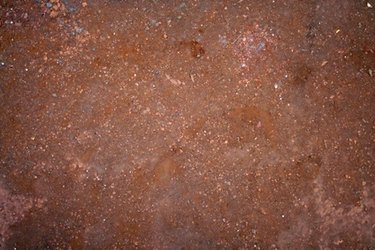Steel septic tanks were built to be sturdy, but even one of the most durable man-made metals can rust out after 15 or 20 years. Rust generally collects at the bottom of a steel septic tank; when it occurs at the top of a tank, it is usually limited to the tank cover. A rusted-out steel septic tank cover can be fixed with a relatively inexpensive replacement; a rusted septic tank should be removed entirely.

Video of the Day
Things You'll Need
Shovel
Replacement Lid
Step 1
Locate the outlines of your septic tank. You can usually get a copy of the plans from your local town clerk's office since the office likely approved a permit for the septic system.
Video of the Day
Step 2
Dig up the sod covering the septic tank. Inspect the top of the tank for signs of rust. If the part of the tank that is covered is rusted, the tank should be replaced. The ground over the top of a rusted-out septic tank can collapse, posing danger for people who walk over it. Replace the sod if there is no rust on top of the tank.
Step 3
Remove the cover and inspect the riser, or the part of the tank that supports the lid. If it is not rusted, you can replace the rusted top with a heavy-duty plastic or concrete lid. Find the correct size by measuring the diameter of the opening. Concrete septic tank covers are heavy but strong and durable. Plastic covers offer faster access to the septic tank and are much easier to install.
Step 4
Install an appropriately sized riser, if necessary. The riser fits over the hole in the septic tank where the previous riser and lid were located. The riser should extend at least 1 foot above ground so you can determine its location in the future.
Step 5
Place caulk between the septic tank and riser, if necessary. Let the caulk dry overnight. Place the new lid over the riser. Make sure that it fits securely to avoid runoff from entering the septic tank.
Tip
Be sure a replacement cover fits snugly over the tank to prevent runoff from entering the tank.
Warning
Have your tank pumped before working around it. The tank can contain large amounts of methane, which can be flammable and toxic.